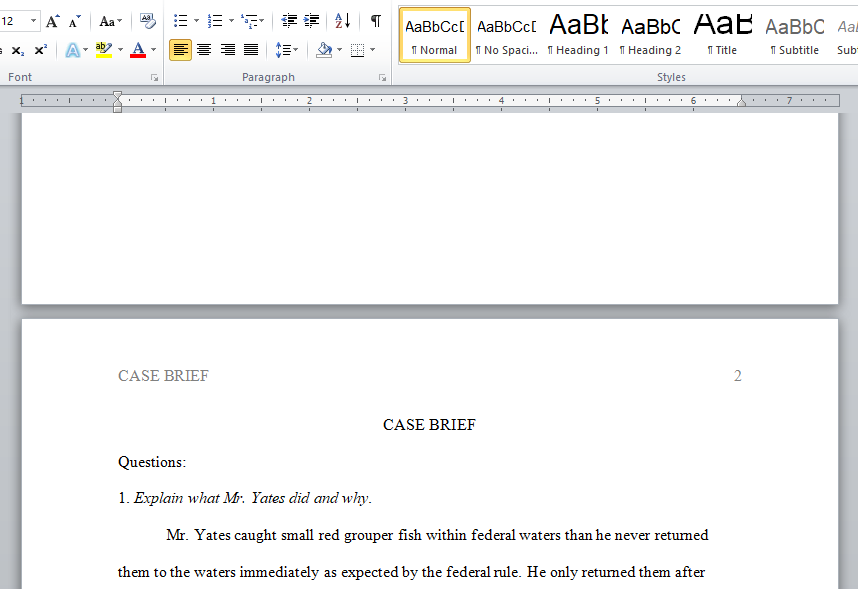Analyze the case briefs you are provided with
case brief 1.1
CASE BRIEF 1.1
Yates v. U.S. 135 S.Ct. 1074 (2015) FACTS: John Yates, a commercial fisherman, caught undersized red grouper in federal waters in the Gulf of Mexico. To prevent federal authorities from confirming that he had harvested undersized fish, Yates ordered a crew member to toss the suspect fish into the sea. Yates was charged with obstruction of justice through destruction of the small red grouper fish. DECISIONS BELOW: Yates was convicted and appealed. His conviction was upheld. He appealed to the U.S. Supreme Court. ISSUE ON APPEAL: Is the release of fish back into the sea obstruction of justice? DECISION: A split court held that the fish were not “tangible objects” for purposes of the obstruction of justice statute. The court held that the statute was passed to cover files and electronic records and not tangible objects such as fish. The court held that the statute was passed in the wake of financial and ethical collapses in companies and was not intended to have generic application. It was directed at electronic files and documentation, not tangible objects such as fish.
Questions: 1. Explain what Mr. Yates did and why. 2. Describe the terms used in the statute at issue and the history of the statute. 3. Why does the dissent think the majority made the decision it did?
3.1. The brokerage firm of E. F. Hutton was charged with federal criminal violations of interstate funds transfers. In reviewing the case, the lawyers for the government discovered internal memoranda from and between branch managers in several states that outline a process for check kiting (a literal stringing together of checks and deposits) that enabled E. F. Hutton to earn interest on phantom deposits. Where will the case be tried? Which court system? Which court? Why? What are the lawyers’ obligations with respect to the documents? What is the company’s obligation? If you were a manager at E. F. Hutton, would you voluntarily disclose the documents to the government?
4.2. In the Johns-Manville asbestos litigation, Samuel Greenstone, an attorney for 11 asbestos workers, settled their claims for $30,000 and a promise that he would not “directly or indirectly participate in the bringing of new actions against the Corporation.” The 1933 case settlement was documented in the minutes of Johns-Manville’s board meeting. Could the information in the minutes be used in later litigation against Johns-Manville? How could a plaintiff’s attorney obtain the information? Do you feel Mr. Greenstone made an ethical decision in his agreement? Wasn’t his loyalty to his 11 clients and his obligation to obtain compensation for them? Would you have agreed to the no-further-participation-in-a-
Answer preview :

Word limit : 699
